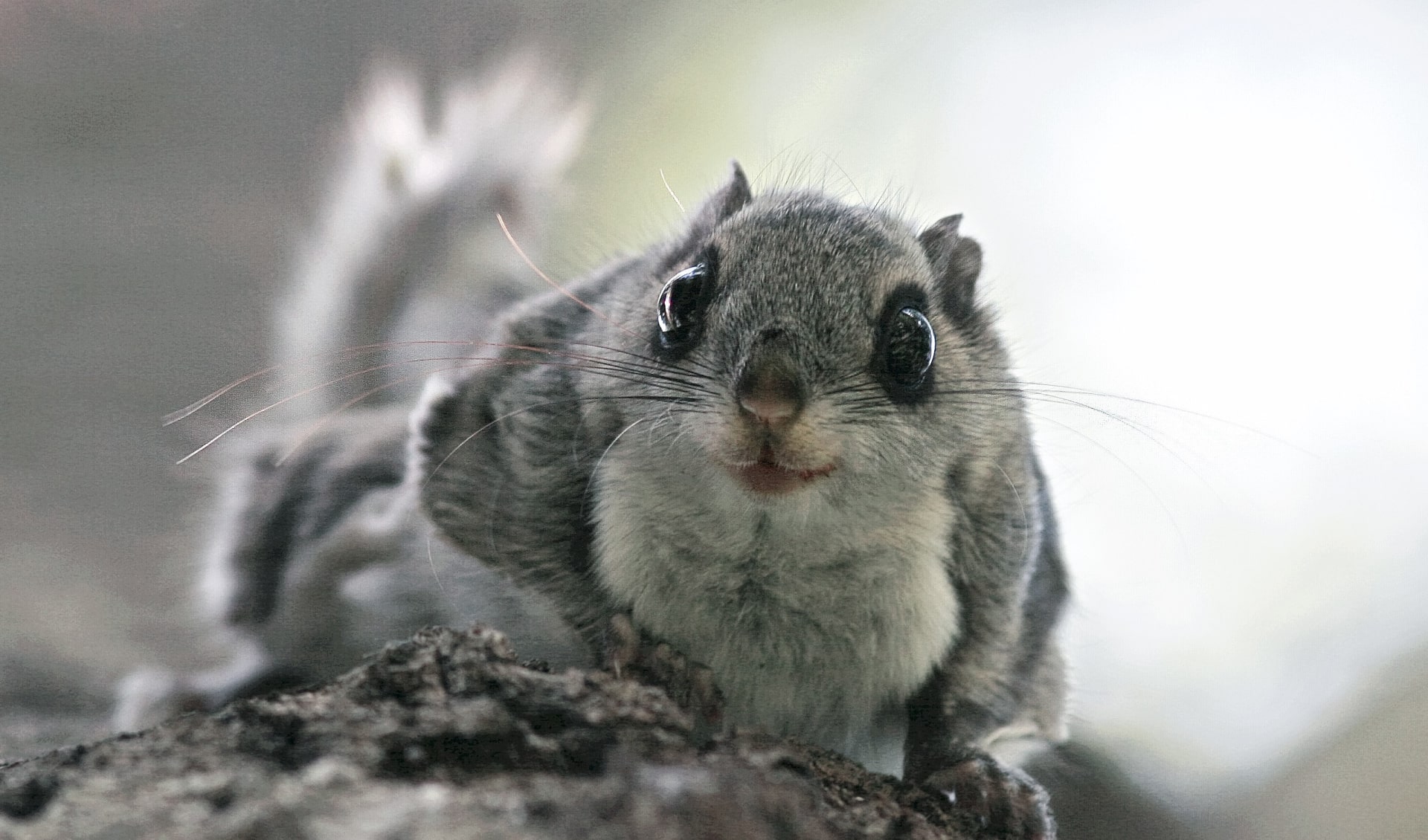Flying squirrel

Foto: Rainer Kurbel
Flying squirrel is a bit smaller than the ordinary squirrel and unlike other squirrels is nocturnal. It has received its name from hairy folds of skin between its fore and hind legs which help it to make jumps up to 35 metres from one tree to another. The flying squirrel is the pride of Estonian forests - in Europe they can only be found in Estonia and Finland.
Flying squirrel is one of the most endangered species of mammals in Estonia, only 111 places of finding of the flying squirrels are known currently. As flying squirrels are so secretive, their nesting trees and habitats can be damaged by woodcutter out of ignorance. Research helps foresters to avoid accidental killing of animals or damage of habitats as areas can be left out from woodcutting plans. Giving protective status to these areas will secure the right type of forest for flying squirrels.
Discovering what flying squirrels, which are nocturnal, are doing requires using various technical tools. It is necessary to obtain a fibre-optic endoscope in order to observe what is going on in the hollow nest of squirrels. Radio receivers and night watching instruments are needed to observe animals at night. Observing flying squirrels tagged with radio transmitters requires radio receivers and aerials that can be safely used. Field work is done by biology graduate students of Tartu University and naturalists coordinated by Uudo Timm.
Flying squirrel is one of the most endangered species of mammals in Estonia, only 111 places of finding of the flying squirrels are known currently. As flying squirrels are so secretive, their nesting trees and habitats can be damaged by woodcutter out of ignorance. Research helps foresters to avoid accidental killing of animals or damage of habitats as areas can be left out from woodcutting plans. Giving protective status to these areas will secure the right type of forest for flying squirrels.
Discovering what flying squirrels, which are nocturnal, are doing requires using various technical tools. It is necessary to obtain a fibre-optic endoscope in order to observe what is going on in the hollow nest of squirrels. Radio receivers and night watching instruments are needed to observe animals at night. Observing flying squirrels tagged with radio transmitters requires radio receivers and aerials that can be safely used. Field work is done by biology graduate students of Tartu University and naturalists coordinated by Uudo Timm.